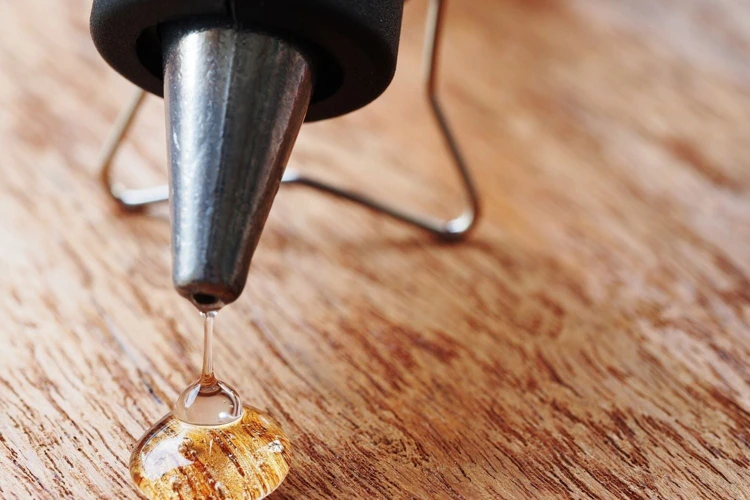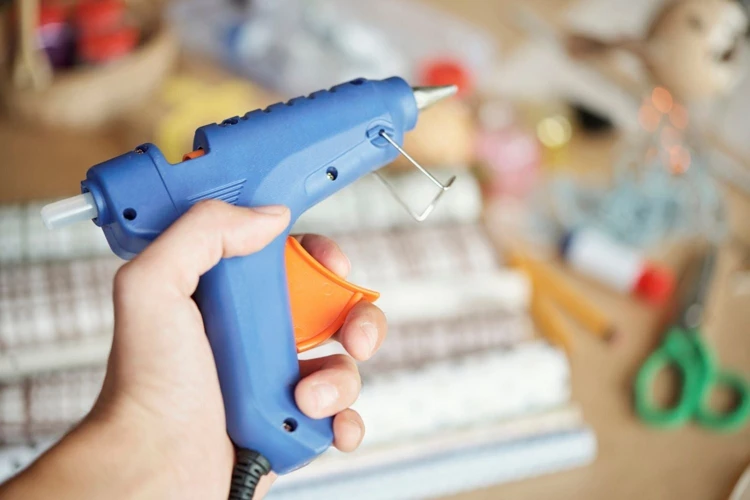Whether you’re a craft enthusiast or someone who occasionally uses adhesive for quick fixes, you might find yourself tackling the challenge of removing hot glue from table surfaces. Understanding the composition of hot glue and the right techniques for its removal can transform what seems like a daunting task into a simple, straightforward process.
Understanding Hot Glue on Furniture
Hot glue, a thermoplastic adhesive, becomes malleable when heated and solidifies rapidly upon cooling. This quick bonding property makes it a popular choice for various projects. However, when it lands on furniture, it can leave an unsightly residue that detracts from the piece’s aesthetic. Knowing how to remove glue without damaging the surface is key to maintaining the integrity and appearance of your furniture.
Essential Tips for Removing Hot Glue from Tables
Before embarking on hot glue removal, it’s important to gather the right information and tools to ensure an effective and safe process. With the correct approach, you can safely remove hot glue and restore your table’s pristine condition.
Precautions for Safely Remove Hot Glue
To prevent damage to your furniture or harm to yourself, certain precautions must be taken. Always work in a well-ventilated area, wear protective gloves to guard against heat, and choose tools that are appropriate for the surface you’re working on. Additionally, patience is crucial; do not rush the process, as this can lead to scratches or further damage.
Step-by-Step Guide to Clean Hot Glue Off Table
When faced with a hot glue mishap, a systematic approach can make glue spill cleanup manageable and effective. Following these steps will ensure that you tackle the problem efficiently.
Initial Steps for Glue Spill Cleanup
- Allow the glue to cool and harden completely before attempting removal.
- Gently scrape off excess glue with a plastic putty knife or an old credit card to avoid scratching the surface.
- Test any cleaning solution on an inconspicuous area of the table to check for adverse reactions.
Detailed Methods for Hot Glue Stain Removal
Once the excess glue is removed, several methods can be employed to address the residual hot glue stain removal. Applying a small amount of rubbing alcohol on a cotton ball can help dissolve the glue. For stubborn spots, a commercial adhesive remover or a mixture of vinegar and water can be used. In some cases, gently warming the glue with a hairdryer set to low heat can soften it enough to be wiped away.
Special Considerations for Hot Glue on Wood Furniture
When dealing with hot glue on furniture, especially wood, extra care must be taken. Wood can be sensitive to moisture and heat, so always use the gentlest method possible. Oil-based products, such as eucalyptus oil or mineral oil, can sometimes loosen the glue’s grip without damaging the wood finish. Remember to treat the area with wood polish afterward to restore its shine.
Advanced Techniques for Removing Hot Glue from Table
For those who encounter hot glue dilemmas frequently or are facing a particularly challenging spill, advanced techniques can be the solution to cleaning hot glue from tabletop surfaces effectively.
Tools and Materials Needed for Hot Glue Removal
Arming yourself with the right tools and materials can make all the difference in hot glue removal. Essential items include a plastic scraper, cotton swabs, rubbing alcohol, adhesive remover, a clean cloth, and possibly a hairdryer. Having these items at hand will prepare you for any glue-related mishap.
Professional Tricks for Cleaning Hot Glue from Tabletop
Industry experts often have a few tricks up their sleeves for tackling tough glue stains. One such trick is to place a piece of cotton fabric over the glue and iron it on a low setting. The heat transfers to the glue through the fabric, making it easier to peel off. Another tip is to freeze the glue using a can of compressed air. When the glue becomes brittle, it can be snapped off with minimal effort.
Preventing Future Hot Glue Spills on Tables
Prevention is always better than cure. By adopting best practices for applying hot glue, you can minimize the risk of future spills and save yourself a lot of cleaning time.
Best Practices for Applying Hot Glue
Some useful precautions include using a silicone mat or parchment paper under your work area, applying glue sparingly, and keeping a damp cloth nearby to immediately address any drips or spills. Additionally, maintaining your glue gun in good working order will ensure precise application and reduce the likelihood of accidents.
Conclusion: Mastery in Removing Hot Glue from Table
With the right knowledge and tools, removing hot glue from table surfaces can be a task that is handled with confidence and ease. By following the steps outlined in this article, you can tackle hot glue mishaps efficiently and keep your furniture looking its best.
Summary of Hot Glue Removal Techniques
Starting with basic cleaning methods and progressing to more advanced techniques if necessary ensures that you can get glue off wood and other surfaces without causing damage. Remember to always test a small area first and proceed with caution for the best results.
Having trouble with hot glue spills on various surfaces around your home? Whether you’re dealing with a sticky situation on your carpet, furniture, or a desk, we’ve got you covered. Check out our guides on how to get hot glue off carpet, learn the best techniques for a fabric couch, and if you’ve accidentally bonded with your desk, our tips on how to get super glue off a desk might just save the day. Don’t let a little adhesive mess become a permanent fixture in your space!
Maintaining Clean and Glue-Free Surfaces
In conclusion, the key to maintaining clean and glue-free surfaces lies in a combination of effective hot glue removal techniques and preventative measures. With these strategies in place, your furniture will remain free of unwanted adhesive residue, ensuring its beauty and longevity for years to come.


